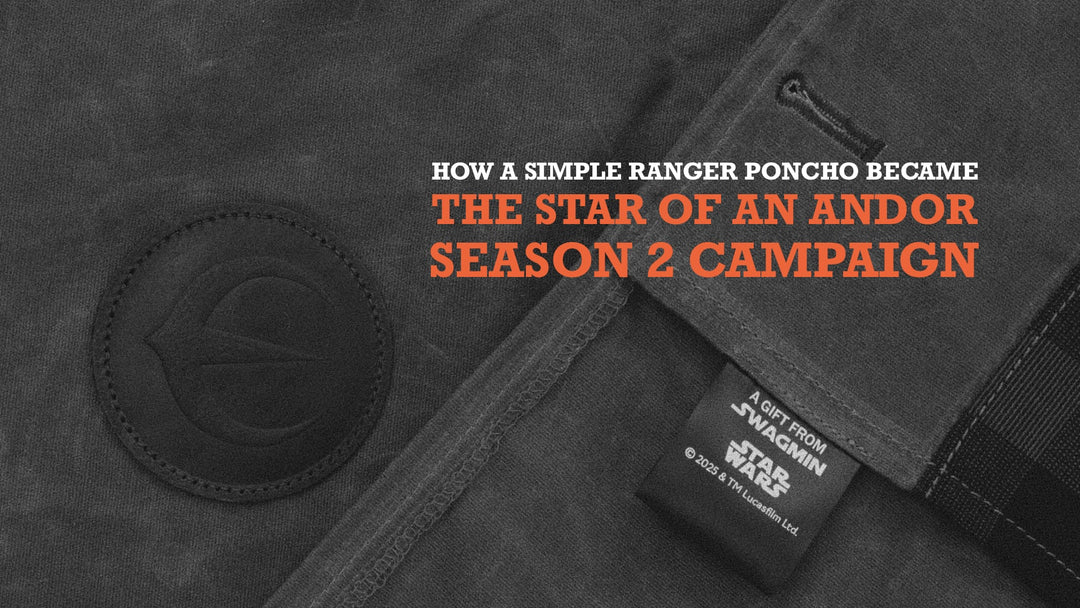Canvas vs. Plastic Rain Ponchos: A Comprehensive Comparison

I saw this original article from Canvas Camp, a supplier of canvas tents and I thought it was a great format. So, I ripped off the premise and applied it to our canvas rain ponchos. When choosing a rain poncho or rain jacket, you often only have one choice: plastic. We're trying to disrupt that market limitation by championing traditional materials like waxed canvas. Each has its own strengths and weaknesses, but when it comes to overall performance in the outdoors, canvas tends to emerge as the superior choice. This article breaks down key factors like breathability, waterproofing, durability, and more to explain why canvas ponchos often outperform their plastic counterparts.
Breathability: Canvas Wins
Canvas Rain Poncho Breathability: Winner
Humidity is one of the most critical factors in maintaining comfort. It affects sweat evaporation, which is crucial for regulating body temperature. Unlike plastic raincoats, canvas allows small moisture particles from sweat and evaporation to escape through the fabric, keeping you dry and comfortable even in humid conditions.
Plastic Poncho Breathability: Loser
Plastic fabrics are vapor-impermeable, preventing moisture from escaping. This leads to a buildup of sweat inside the poncho, making it feel hotter or colder than the outside environment. Plastic raincoats rely on vents to circulate air, which must be closed during heavy rain, trapping moisture inside.
Waterproofing: Canvas Wins
Canvas Poncho Waterproofing: Winner
The tight weave of quality canvas naturally repels water, with raindrops beading up and rolling off. During heavy rain, the fibers swell, tightening the weave and enhancing water resistance. Waxed canvas further improves this by adding an extra water-repellent layer, making it highly effective in wet conditions.
Plastic Poncho Waterproofing: Loser
Plastic materials rely on additional chemical coatings like polyurethane or PVC for waterproofing. While effective initially, once saturated, these fabrics can hold moisture, increasing humidity inside the poncho. This leads to an uncomfortable, damp feeling, and the need for strategic layering beneath the garment.
Durability: Canvas Wins
Canvas Poncho Durability: Winner
Canvas ponchos are built to last, with tough, rip-resistant fabric that is easy to repair in the field. With proper maintenance, they can withstand years of use. A simple needle and thread can fix small tears, while larger repairs can be made with patches and a sewing machine.
Plastic Poncho Durability: Loser
Plastic ponchos tear easily and are difficult to repair permanently. While small tears can be patched temporarily, the fix rarely lasts long. Nylon and polyester are affordable but often seen as disposable, with many being thrown away after sustaining damage.
Ventilation: Canvas Wins
Canvas Rain Poncho Ventilation: Winner
Canvas ponchos are designed to promote airflow, especially with styles like the Ranger Poncho, which leave open space below the shoulders. This reduces the buildup of sweat and body heat, making them more comfortable in warm, humid environments.
Plastic Poncho Ventilation: Loser
Plastic raincoats trap heat and moisture, relying solely on vents and zippers for ventilation. In high humidity, they become uncomfortable, and insufficient airflow can make the wearer feel sticky and wet.
Strength: Canvas Wins
Canvas Poncho Strength: Winner
Jack Stillman’s Drifter and Ranger Ponchos are built for endurance, using high-quality zippers, hardware, and heavy-duty stitching. Designed in Australia, these ponchos are meant to withstand harsh outdoor conditions for decades.
Plastic Poncho Strength: Loser
Cheap, mass-produced plastic ponchos are often thin and easily damaged. While some plastics are recyclable, most end up in landfills, contributing to long-term environmental waste.
UV Resistance: Canvas Wins
Canvas Poncho UV Resistance: Winner
Densely woven canvas absorbs UV radiation more effectively than lighter natural fibers. Additionally, beeswax-treated canvas offers some sun protection, making it a solid choice for outdoor use.
Plastic Poncho UV Resistance: Loser
Plastic materials degrade when exposed to UV radiation, breaking down into microplastics. Once this process begins, the poncho becomes irreparable and ends up as waste in landfills.
Weight: Plastic Wins
Canvas Poncho Weight: Loser
Canvas is heavier, with 8oz canvas weighing approximately 271.25 grams per square meter. This weight can be cumbersome compared to lighter synthetic materials, particularly when weight is a primary concern for backpackers.
Plastic Poncho Weight: Winner
Synthetic materials like nylon and polyester are ultralight, making them a popular choice for those prioritizing weight over durability and comfort.
Environmental Sustainability: Canvas Wins
Canvas Poncho Sustainability: Winner
Canvas is made from cotton, a biodegradable and renewable resource. Its durability extends its lifespan, reducing waste. While not the ultimate in sustainability, canvas is far more eco-friendly than synthetic materials.
Plastic Poncho Sustainability: Loser
Plastic ponchos are made from petroleum-based materials, contributing to environmental harm both in production and disposal. Most plastics take hundreds of years to break down, leading to significant waste and pollution.
Conclusion
In almost every category, canvas ponchos outperform plastic options in terms of durability, comfort, and environmental impact. While plastic ponchos may win in terms of weight and price, the long-term benefits of investing in a canvas poncho far outweigh the convenience of a lighter material. For anyone seeking reliability and sustainability in their outdoor gear, canvas is clearly the superior choice.






